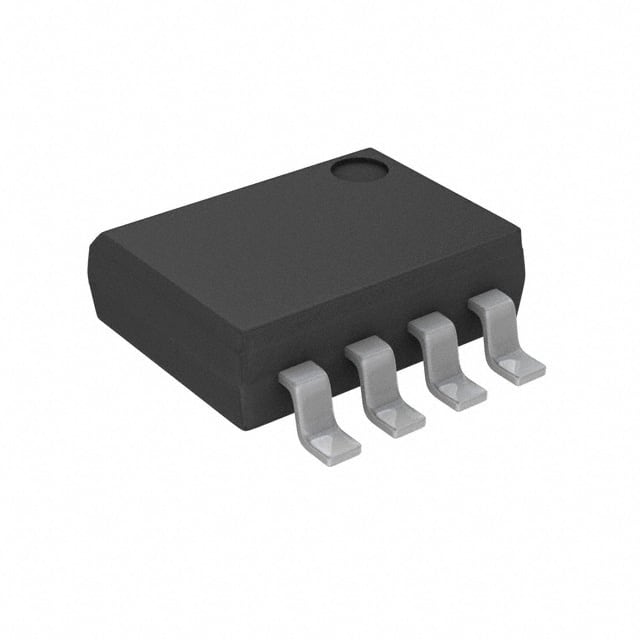Zie specificaties voor productdetails.

RM24C128A-BSNC-B
Product Overview
Category
RM24C128A-BSNC-B belongs to the category of non-volatile memory devices.
Use
This product is primarily used for data storage in various electronic devices, such as microcontrollers, embedded systems, and consumer electronics.
Characteristics
- Non-volatile: The RM24C128A-BSNC-B retains stored data even when power is disconnected.
- High capacity: It has a storage capacity of 128 kilobits (16 kilobytes).
- Serial interface: The device communicates using a serial interface, making it easy to integrate into different systems.
- Low power consumption: The RM24C128A-BSNC-B operates on low power, making it suitable for battery-powered devices.
- Fast access time: It offers fast read and write operations, ensuring efficient data transfer.
Package
The RM24C128A-BSNC-B is available in a small outline no-lead (SON) package, which provides compactness and ease of integration.
Essence
The essence of this product lies in its ability to store and retrieve data reliably, offering a convenient solution for applications requiring non-volatile memory.
Packaging/Quantity
The RM24C128A-BSNC-B is typically packaged in reels or trays, with a quantity of 2500 units per reel/tray.
Specifications
- Memory Capacity: 128 kilobits (16 kilobytes)
- Interface: I2C (Inter-Integrated Circuit)
- Operating Voltage: 1.7V to 5.5V
- Operating Temperature Range: -40°C to +85°C
- Data Retention: Up to 100 years
- Write Endurance: 1 million write cycles
Detailed Pin Configuration
The RM24C128A-BSNC-B has a total of 8 pins, which are as follows:
- VCC: Power supply voltage
- GND: Ground
- SDA: Serial data input/output
- SCL: Serial clock input
- WP: Write protect (optional)
- A0: Address bit 0
- A1: Address bit 1
- A2: Address bit 2
Functional Features
- Random access: The device allows random access to any memory location, enabling efficient data retrieval.
- Hardware write protection: The optional write protect pin (WP) can be used to prevent accidental writes to the memory.
- Page write mode: It supports page write operations, allowing multiple bytes of data to be written in a single operation, enhancing write efficiency.
- Software and hardware reset: The RM24C128A-BSNC-B provides both software and hardware reset options for system initialization.
Advantages and Disadvantages
Advantages
- Non-volatile storage ensures data retention even during power loss.
- Compact package size facilitates integration into space-constrained designs.
- Low power consumption extends battery life in portable devices.
- Fast access time enables quick data retrieval.
- High write endurance ensures long-term reliability.
Disadvantages
- Limited storage capacity compared to other non-volatile memory options.
- Relatively higher cost per kilobyte compared to larger capacity memory devices.
Working Principles
The RM24C128A-BSNC-B utilizes I2C communication protocol to interface with the host system. It stores data in an array of non-volatile memory cells, which can be electrically programmed and erased. The device uses a combination of floating gate and tunnel oxide technology to achieve non-volatility.
Detailed Application Field Plans
The RM24C128A-BSNC-B finds applications in various fields, including: 1. Internet of Things (IoT) devices 2. Smart home automation systems 3. Industrial control systems 4. Automotive electronics 5. Medical devices
Detailed and Complete Alternative Models
- RM24C256A-BSNC-B: This model offers double the storage capacity of RM24C128A-BSNC-B, with 256 kilobits (32 kilobytes).
- RM24C64A-BSNC-B: This model provides half the storage capacity of RM24C128A-BSNC-B, with 64 kilobits (8 kilobytes).
- RM24C512A-BSNC-B: This model offers four times the storage capacity of RM24C128A-BSNC-B, with 512 kilobits (64 kilobytes).
These alternative models provide options for different memory requirements in various applications.
Word count: 607 words
Noem 10 veelgestelde vragen en antwoorden met betrekking tot de toepassing van RM24C128A-BSNC-B in technische oplossingen
Sure! Here are 10 common questions and answers related to the application of RM24C128A-BSNC-B in technical solutions:
Q: What is RM24C128A-BSNC-B? A: RM24C128A-BSNC-B is a specific model of EEPROM (Electrically Erasable Programmable Read-Only Memory) chip.
Q: What is the storage capacity of RM24C128A-BSNC-B? A: RM24C128A-BSNC-B has a storage capacity of 128 kilobits, which is equivalent to 16 kilobytes.
Q: What are some common applications of RM24C128A-BSNC-B? A: RM24C128A-BSNC-B is commonly used in various electronic devices such as automotive systems, industrial control systems, medical equipment, and consumer electronics.
Q: How does RM24C128A-BSNC-B connect to a microcontroller or other devices? A: RM24C128A-BSNC-B typically uses an I2C (Inter-Integrated Circuit) interface to communicate with microcontrollers or other devices.
Q: Can RM24C128A-BSNC-B be reprogrammed multiple times? A: Yes, RM24C128A-BSNC-B is electrically erasable and programmable, allowing it to be reprogrammed multiple times.
Q: What is the operating voltage range of RM24C128A-BSNC-B? A: RM24C128A-BSNC-B operates within a voltage range of 1.7V to 5.5V.
Q: Does RM24C128A-BSNC-B have any built-in security features? A: Yes, RM24C128A-BSNC-B supports hardware write protection and software write protection to prevent unauthorized access or modification of data.
Q: Can RM24C128A-BSNC-B operate in extreme temperature conditions? A: Yes, RM24C128A-BSNC-B is designed to operate within a wide temperature range, typically from -40°C to +85°C.
Q: What is the typical data retention time of RM24C128A-BSNC-B? A: RM24C128A-BSNC-B has a typical data retention time of 200 years, ensuring long-term storage of critical information.
Q: Are there any specific programming requirements for RM24C128A-BSNC-B? A: RM24C128A-BSNC-B requires specific programming voltages and timing sequences, which can be found in the datasheet provided by the manufacturer.
Please note that these answers are general and may vary depending on the specific implementation and requirements of the technical solution.

